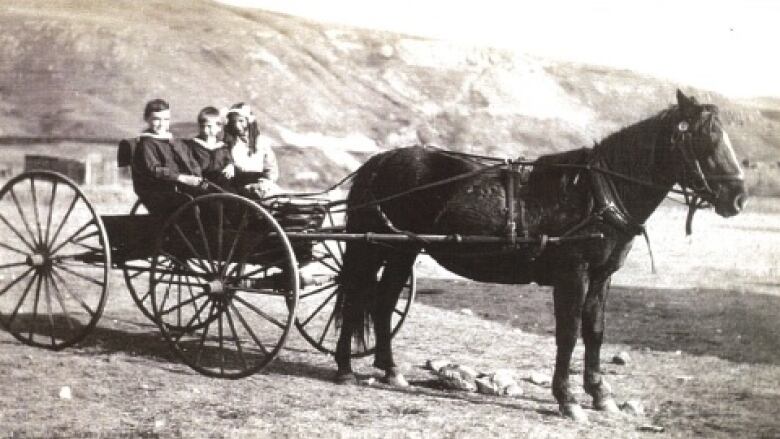How an Alberta ghost town's history is being coaxed out by Calgary archeologists
Just around the corner from Calgary, Glenbow Town is slowly revealing itself to history buffs

It was a historically important, but short-lived town. And until the Calgary chapter of the Archeological Society of Alberta started work on it almost 10 years ago, it hadn't beenstudied.
Following Highway 1-A halfway between Calgary and Cochrane the peaceful-looking area called Glenbow Ranch Provincial Park used to be a bustling town where more than 180 men worked chipping away at a sandstone quarry.
On Monday, Shari Peyerl, co-director of the Glenbow Town and Quarry Project, spoke to the Homestretch about some of the important discoveries the continued dig is making at the site that was once Glenbow Village.

"The quarry closed in 1912, some people stayed if they could find odd jobs in the neighbourhood but most people left," Peyerl said. "The buildings fell into disrepair. Some of them were carted away for lumber, some of them were moved whole, and some of them were burned down."
The site reverted to ranch land after it was deserted.
Glenbow Village's short life-span from 1907 to 1927 made it a good spot for an archaeological record because there wasn't much development after folks skipped town, so there's potential for well-preserved artifacts.
Last summer Peyerl said they found the cornerstone of the town's union labour hall, one of the only public buildings in the municipality.
"We had last seen a photograph of it from 1973 and weren't quite sure where it was," Peyerl said. "Using aerial photographs and satellite technology and land titles records, we relocated it and then rescued it with an excavation."
With her historical research and one of four union member names written on the cornerstone, she was able to find the story of Joseph Towill.

"I could see that he had come on a passenger list cross from Scotland to Canada. But what it didn't tell us was why he came from Scotland to North America," Peyerl said. "And that's because he wanted to audition for the Metropolitan Opera in New York."
She said when he arrived in Canada he ran out of money. As a stonecutter, he found out there was work in Calgary and settled. He became a member of the local football team (known as soccer these days.)
"He was part of the national championship team in 1908," Peyerl said. "I found his youngest son, and he told me the stories and it was wonderful."
She also learned about Ida McCormick, the only woman who worked at the quarry. As a single 40-year-old woman she may have worked as an accountant or a secretary.
"If she really was the accountant, she had a pretty high position, but she wasn't paid as much as the men and which of course, was normal for the time," she said.
In all, Peyerl spoke to hundreds of people. From the archeological findings, she branched out research tracing 72 families.
Sandstone city
The site was operating between 1907 and 1912 as a sandstone quarry with a settlement of workers attached. There were domestic spaces like workers' quarters where the single men and managers lived. Nearby, Glenbow Village was home to families.
It had its own railway station, school, general store and post office.
Many Alberta sandstone landmarks, like the Alberta Legislature Building and Government House in Edmonton, were built using sandstone from the quarry. In Calgary, the popular building material from that quarry was used to build Courthouse No.2 and the McDougall Centre.
History brought to life
A book of Peyerl's findings, including the stories of 34 families, is in the interpretive centre at Glenville Ranch Provincial Park.
Peyerl is also looking for a publisher for the book she put together during the Glenbow Town and quarry project.
- MORE CALGARY NEWS |How a vintage Calgary Transit bus took owner on 'trip of a lifetime' to Toronto
- MORE ALBERTA NEWS |Archeologists find treasure in aftermath of Alberta fire
- Read more articles byCBC Calgary, like us onFacebookfor updates, and subscribe to ourCBC Calgarynewsletterfor the day's news at a glance.
With files fromThe Homestretch.












_(720p).jpg)


 OFFICIAL HD MUSIC VIDEO.jpg)
.jpg)



























































































